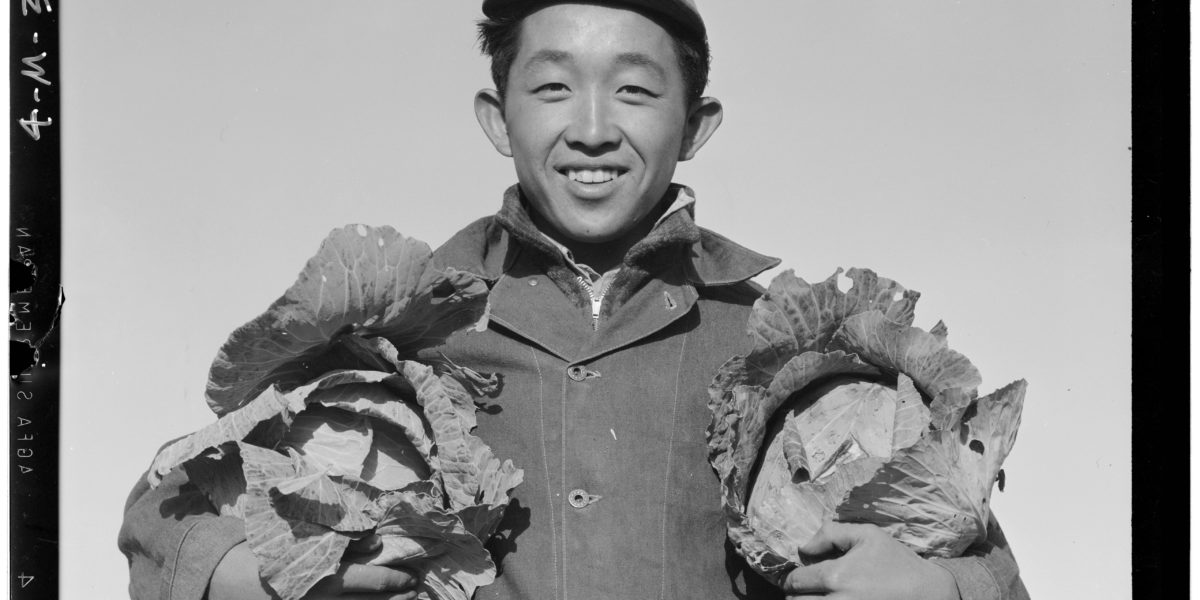
What Japanese-American Farmers Did For the West: A Brief History
Japanese farmers were instrumental in establishing the West as America’s epicenter of fruit agriculture, until the effects of World War II rippled throughout the region.

Ansel Adams / Library of Congress
The history of farming in the West is interwoven with that of Japanese-Americans. The first Japanese immigrants, or Nikkei, were predominantly young, unmarried men drawn to the West by railroad jobs because of the Chinese Exclusion Act of 1882, which, by the 1890s, had left a serious labor shortage in California. By the turn of the century, Japanese workers began leaving Hawaiian sugar plantations and moving to California to fill these labor voids and to seek new opportunities.
Upon arrival, the Japanese had few employment opportunities besides as laborers, but unlike being a servant or running a laundry, for example, farming was a respected trade in Japan, and compared to other trades, farming had higher earning potential. Nikkei farmers ably grew all manner of fruits, sugar beets, and vegetables here in the West; they took our fertile, volcanic and marine deposit-laden soils—similar to those of Japan—and they revolutionized strawberry farming.

Ouchi Family Collection
By the 1910s, nearly two-thirds of all Nikkei on the West Coast worked on farms, tilling lands everywhere from abandoned gold mines in Placer County, California, to the undeveloped hillsides and rural outskirts of Portland, Oregon; in Los Angeles County, nearly 80% of strawberry farmers were Japanese. At the time it formed in 1917, the Central California Berry Grower Association (which became Naturipe Berry Growers in 1922) included a bylaw stipulating that half its board of directors were Japanese.
Then came Pearl Harbor, a day that would live in infamy, according to President Franklin D. Roosevelt. He responded by creating his own day of infamy; on February 19, 1942, Roosevelt signed his Executive Order 9066. After peacefully cultivating the lands of Washington, Oregon, and California for three decades, American citizens of Japanese descent were unjustly rounded up and forced into concentration camps, sequestered inland where Roosevelt supposed they could pose no threat. In all, 112,000 Americans living on the West Coast were incarcerated in ten relocation camps mostly stationed throughout the West. They were kept there for the duration of World War II, their loyalty always in question. Some internees were allowed to farm during the war, however; because of an acute labor shortage, Amalgamated Sugar Company and state officials were able to convince Roosevelt to release farmers from Minidoka Camp in Idaho to work the sugar beet fields in Nyssa, Oregon.
After the unjust internment of Japanese-Americans during the war ended, Driscoll’s invited the released prisoners to become sharecroppers in the company, but this sort of kindness was rare; some returned to find that their land had overgrown, that their equipment had been stolen. Those who did try to rebuild faced arson, vandalism, and threats of violence from their white neighbors.
But some former incarcerees were able to reestablish their farms — family farms like Sakuma Brothers near Seattle, Mukai in Vashon Island, Kitazawa in San Jose, and Kiyokawa Family Orchard in Hood River are just a few of the many Japanese-American farmers and growers who started farming the West more than a century ago and are still active today.
There’s a Japanese proverb that sums up the experience of Japanese-American farmers: ame futte ji katamaru (雨降って地固まる) — after the rain, earth hardens; or, adversity builds strength. The shameful actions of a desperate government can never be forgiven, but the Japanese farmers of the West are like bamboo: both flexible and strong, a symbol of resilience.
